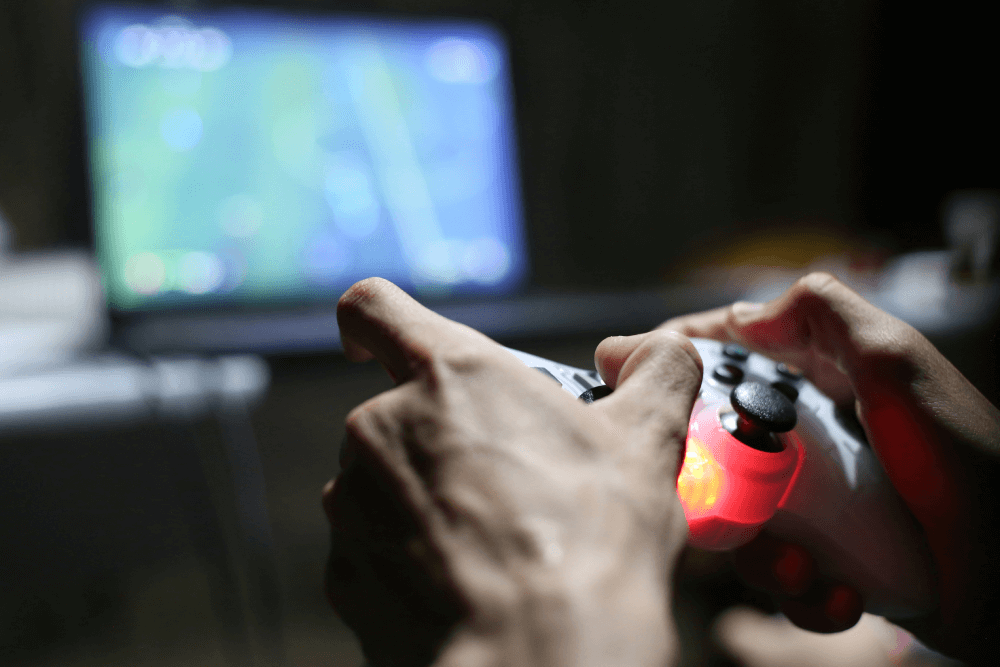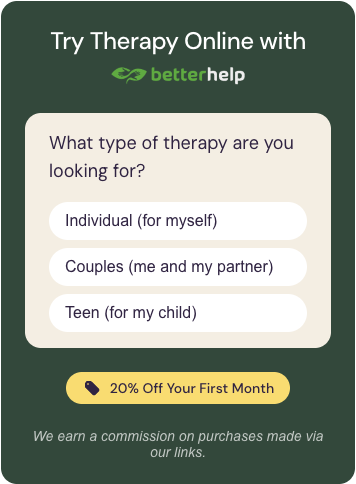The Allure of Azeroth: Why World of Warcraft Is So Captivating
World of Warcraft (WoW) has redefined the MMORPG genre since its 2004 launch, becoming a cultural phenomenon that has captivated millions. The game’s immersive world, Azeroth, offers players an unparalleled escape into a rich fantasy realm. However, for some, this escape has evolved from a hobby into a full-blown addiction.
A World of Endless Possibilities
WoW’s addictive nature stems from its vast scope and depth:
- Expansive world: Azeroth spans multiple continents and planets, each with unique landscapes, cultures, and histories.
- Rich lore: The game’s storyline spans over 10,000 years of in-game history, with countless characters and events to discover.
- Diverse gameplay: Players can choose from 13 races and 12 classes, each with unique abilities and playstyles.
- Constant updates: Regular content patches and expansions ensure there’s always something new to explore.
Social Connections and Community
WoW’s social aspects contribute significantly to its addictive potential:
- Guilds: These player-run organizations foster strong social bonds and provide a sense of belonging.
- Collaborative content: Raids and dungeons require teamwork, encouraging players to form lasting relationships.
- In-game events: Holiday celebrations and special events create a sense of shared experience among players.
- Cross-platform communication: Voice chat and companion apps allow players to stay connected even when not in-game.
Psychological Factors
Several psychological mechanisms contribute to WoW’s addictive nature:
- Variable ratio reinforcement: The game’s reward system, similar to that of slot machines, keeps players engaged with unpredictable rewards.
- Flow state: The balance of challenge and skill in WoW can induce a state of deep focus and enjoyment.
- Escapism: The immersive world provides an escape from real-life stressors and responsibilities.
- Identity exploration: Players can experiment with different identities through their characters, fulfilling unmet needs in real life.
Understanding Gaming Addiction: Signs and Symptoms
In 2018, the World Health Organization officially recognized gaming disorder as a mental health condition. This classification highlights the growing concern around gaming addiction, including WoW addiction.
Common Signs of Gaming Addiction
- Preoccupation with gaming: Constantly thinking about WoW, planning next gaming sessions, or reminiscing about past achievements.
- Loss of control: Inability to reduce playtime or quit despite attempts to do so.
- Tolerance: Needing to play for longer periods or engage in more intense gaming to achieve satisfaction.
- Withdrawal symptoms: Experiencing irritability, anxiety, or depression when unable to play.
- Neglecting responsibilities: Letting work, school, or relationships suffer due to excessive gaming.
- Continuing despite negative consequences: Persisting with gaming habits despite awareness of their harmful effects.
- Deceiving others: Lying about or hiding the extent of gaming involvement from friends and family.
- Using gaming to escape: Relying on WoW to avoid dealing with real-life problems or emotions.
- Jeopardizing opportunities: Missing out on career advancements, educational opportunities, or social events due to gaming.
- Physical symptoms: Experiencing headaches, eye strain, or sleep disturbances related to excessive gaming.
The Neuroscience of Gaming Addiction
Research has shown that gaming addiction affects the brain similarly to substance addictions:
- Dopamine release: Gaming triggers the release of dopamine, a neurotransmitter associated with pleasure and reward.
- Neural pathway changes: Prolonged gaming can alter brain structure and function, particularly in areas related to reward processing and impulse control.
- Cognitive changes: Excessive gaming may impact attention, memory, and decision-making abilities.
Personal Stories: The Reality of WoW Addiction
Sarah’s Story: From Casual Player to Raid Leader
Sarah, a 28-year-old marketing professional, started playing WoW casually in college. Her story illustrates the gradual progression from casual gaming to addiction:
- Initial enjoyment: “At first, it was just a fun way to unwind after classes.”
- Escalation: “As I got more involved in raiding, I found myself spending more and more time in Azeroth.”
- Negative consequences: “I’d skip classes to run dungeons, and I’d cancel plans with friends to raid.”
- Wake-up call: “I nearly lost my job due to poor performance.”
- Recovery: “I had to take a hard look at my priorities and make some tough decisions about my gaming habits.”
Sarah’s experience highlights the importance of maintaining balance and recognizing when gaming starts to interfere with real-life responsibilities.
Mike’s Journey: Using WoW to Cope with Depression
Mike, a 35-year-old IT specialist, turned to WoW as a coping mechanism for depression and social anxiety:
- Escape from reality: “In Azeroth, I felt powerful and respected. I could be the hero I couldn’t be in real life.”
- Escalation: “I was spending 12-14 hours a day in the game.”
- Relationship breakdown: “I lost touch with reality and pushed away everyone who tried to help me.”
- Rock bottom: “My marriage ended, and I became estranged from my family.”
- Seeking help: “I realized that WoW wasn’t solving my problems; it was just helping me avoid them. I needed professional help to address my mental health issues and rebuild my life.”
Mike’s story underscores the importance of addressing underlying mental health issues and seeking professional help when gaming becomes a problematic coping mechanism.
Expert Insights: Gaming Addiction and Mental Health
Dr. Emily Chen, a clinical psychologist specializing in gaming and internet addiction, provides valuable insights into the psychology behind gaming addiction:
The Psychology Behind Gaming Addiction
- Reward system activation: “Games like World of Warcraft are designed to be engaging and rewarding. They tap into our brain’s reward system, releasing dopamine and creating a sense of achievement and progress.”
- Vulnerability factors: “For some individuals, especially those dealing with underlying mental health issues, this can lead to a problematic relationship with gaming.”
The Link Between Gaming Addiction and Mental Health
Dr. Chen notes that gaming addiction often co-occurs with other mental health conditions:
- Depression: Gaming may serve as an escape from feelings of sadness or hopelessness.
- Anxiety disorders: The structured environment of games can provide a sense of control for those with anxiety.
- ADHD: The constant stimulation in games may be particularly appealing to individuals with attention deficit disorders.
- Social anxiety disorder: Online interactions may feel safer and more manageable than real-life social situations.
“It’s important to understand that excessive gaming can be both a symptom and a cause of mental health issues,” Dr. Chen explains. “Some individuals turn to games as a way to escape from their problems, while others may develop mental health issues as a result of their gaming habits.”
The Impact of Gaming Addiction on Brain Function
Recent neuroimaging studies have revealed significant changes in the brains of individuals with gaming addiction:
- Gray matter reduction: Excessive gaming has been linked to decreased gray matter volume in areas responsible for cognitive control and decision-making.
- White matter alterations: Changes in white matter integrity have been observed, potentially affecting communication between different brain regions.
- Reward circuit dysfunction: Similar to substance addictions, gaming addiction can lead to alterations in the brain’s reward processing system.
Strategies for Overcoming Gaming Addiction
For those struggling with World of Warcraft addiction, there are several evidence-based strategies that can help regain control and establish a healthier relationship with gaming:
1. Cognitive Behavioral Therapy (CBT)
CBT is a widely-used therapeutic approach for addressing gaming addiction:
- Identifying triggers: Recognize situations, emotions, or thoughts that lead to excessive gaming.
- Challenging cognitive distortions: Address unrealistic beliefs about gaming and its role in one’s life.
- Developing coping skills: Learn healthier ways to manage stress and emotions without relying on gaming.
2. Motivational Interviewing
This counseling approach helps individuals find internal motivation for change:
- Exploring ambivalence: Examine both the positive and negative aspects of gaming habits.
- Setting goals: Establish clear, achievable objectives for reducing gaming time.
- Enhancing self-efficacy: Build confidence in one’s ability to make positive changes.
3. Mindfulness-Based Interventions
Mindfulness techniques can help individuals become more aware of their gaming habits and underlying emotions:
- Mindful gaming: Practice being fully present and aware while playing, rather than using it as an escape.
- Urge surfing: Learn to observe and ride out gaming urges without acting on them.
- Meditation: Regular meditation practice can improve emotional regulation and impulse control.
4. Lifestyle Modifications
Making changes to daily routines and habits can support recovery from gaming addiction:
- Sleep hygiene: Establish a regular sleep schedule and avoid late-night gaming sessions.
- Physical activity: Regular exercise can provide natural mood-boosting effects and reduce gaming cravings.
- Social connections: Prioritize in-person social interactions and relationships outside of gaming.
- Time management: Use scheduling tools to allocate specific times for gaming and other activities.
5. Support Groups
Joining support groups can provide valuable peer support and accountability:
- Online communities: Platforms like Reddit’s r/StopGaming offer forums for individuals seeking to overcome gaming addiction.
- In-person groups: Organizations like Computer Gaming Addicts Anonymous provide face-to-face support meetings.
- Family support: Involving family members in the recovery process can enhance understanding and create a supportive home environment.
6. Digital Detox
For some individuals, a period of complete abstinence from gaming may be beneficial:
- Gradual reduction: Slowly decrease gaming time over several weeks.
- Cold turkey approach: Set a specific date to stop gaming entirely for a predetermined period.
- Replacement activities: Plan engaging alternative activities to fill the time previously spent gaming.
Returning to WoW: Enjoying the Game Responsibly
For many, completely giving up World of Warcraft may not be necessary or desirable. It’s possible to enjoy the game as part of a balanced lifestyle. Here are some evidence-based strategies for responsible gaming:
1. Set Clear Boundaries
Establish specific, measurable limits for gaming time:
- Use parental controls: Utilize WoW’s built-in parental controls to set daily or weekly time limits.
- Time-tracking apps: Use apps like RescueTime or ManicTime to monitor and limit gaming sessions.
- Schedule gaming time: Allocate specific time slots for gaming, treating it like any other leisure activity.
2. Practice Mindful Gaming
Approach gaming with intention and awareness:
- Set goals: Before each session, define clear objectives for what you want to accomplish in-game.
- Take breaks: Use the 20-20-20 rule: Every 20 minutes, take a 20-second break and look at something 20 feet away.
- Reflect on enjoyment: Regularly assess whether you’re genuinely enjoying your gaming experience or playing out of habit.
3. Maintain a Balanced Lifestyle
Ensure that gaming doesn’t overshadow other important aspects of life:
- Prioritize responsibilities: Complete work, school, or household tasks before gaming.
- Engage in diverse activities: Pursue hobbies and interests outside of gaming to maintain a well-rounded life.
- Nurture relationships: Make time for in-person social interactions with friends and family.
4. Monitor Physical and Mental Health
Pay attention to how gaming affects your overall well-being:
- Track sleep patterns: Ensure that gaming doesn’t interfere with getting adequate, quality sleep.
- Practice good ergonomics: Set up your gaming area to minimize physical strain and discomfort.
- Check in emotionally: Regularly assess your mood and stress levels in relation to your gaming habits.
5. Engage with the WoW Community Responsibly
Leverage the social aspects of WoW in a healthy way:
- Set boundaries with in-game friends: Communicate your gaming limits to guildmates and friends.
- Participate in positive communities: Seek out guilds and groups that promote healthy gaming habits.
- Share your journey: Consider mentoring other players who are trying to balance their gaming habits.
Conclusion: Finding Balance in Azeroth and Beyond
World of Warcraft has provided millions of players with entertainment, social connections, and a sense of achievement. However, it’s crucial to recognize when gaming habits become problematic and take steps to maintain a healthy balance.
By understanding the signs of gaming addiction, seeking help when needed, and implementing strategies for responsible gaming, it’s possible to enjoy the rich world of Azeroth without letting it overshadow your real-life experiences and relationships.
Remember, your journey in Azeroth should enhance your life, not replace it. Whether you’re a current player, a recovering addict, or someone concerned about a loved one’s gaming habits, there are resources and support available to help you navigate the complex relationship between gaming and real life.
Resources for Help and Support
- National Problem Gambling Helpline: 1-800-522-4700
- Online Gamers Anonymous: www.olganon.org
- Computer Gaming Addicts Anonymous: www.cgaa.info
- International Gaming Research Unit: www.ntu.ac.uk/igru
FAQs
Q: How many hours of gaming per day is considered addiction?
A: There’s no specific number of hours that definitively indicates addiction. It’s more about the impact on your life. If gaming is interfering with your work, relationships, or other responsibilities, it may be problematic regardless of the exact time spent. However, research suggests that playing more than 20-25 hours per week may increase the risk of negative consequences.
Q: Can World of Warcraft addiction be cured?
A: While “cure” might not be the right term, gaming addiction can be effectively managed and overcome with proper treatment and support. Many people learn to enjoy games like WoW in moderation or find fulfillment in other activities. Treatment approaches such as cognitive-behavioral therapy have shown promising results in helping individuals regain control over their gaming habits.
Q: Are certain personality types more prone to WoW addiction?
A: Research suggests that individuals with traits such as impulsivity, low self-esteem, and a tendency towards escapism may be more susceptible to gaming addiction. Additionally, people with pre-existing mental health conditions like depression or anxiety may be at higher risk. However, it’s important to note that anyone can potentially develop problematic gaming habits, regardless of personality type.
Q: How can parents prevent their children from developing a WoW addiction?
A: Parents can take several steps to promote healthy gaming habits:
- Set clear rules about gaming time and stick to them consistently
- Encourage a balance of activities, including physical exercise and social interactions
- Monitor their child’s gaming habits and be aware of any changes in behavior or mood
- Foster open communication about gaming and its potential risks
- Model healthy technology use themselves
- Consider using parental control software to limit gaming time
Q: Can playing World of Warcraft have any positive effects?
A: Yes, when played in moderation, WoW can provide several benefits:
- Improved problem-solving skills and strategic thinking
- Enhanced social connections and teamwork abilities
- Stress relief and relaxation
- Improved hand-eye coordination and reaction times
- Opportunities for creativity and self-expression through character customization and role-playing
The key is maintaining a balance with other aspects of life and being mindful of the time spent gaming.



